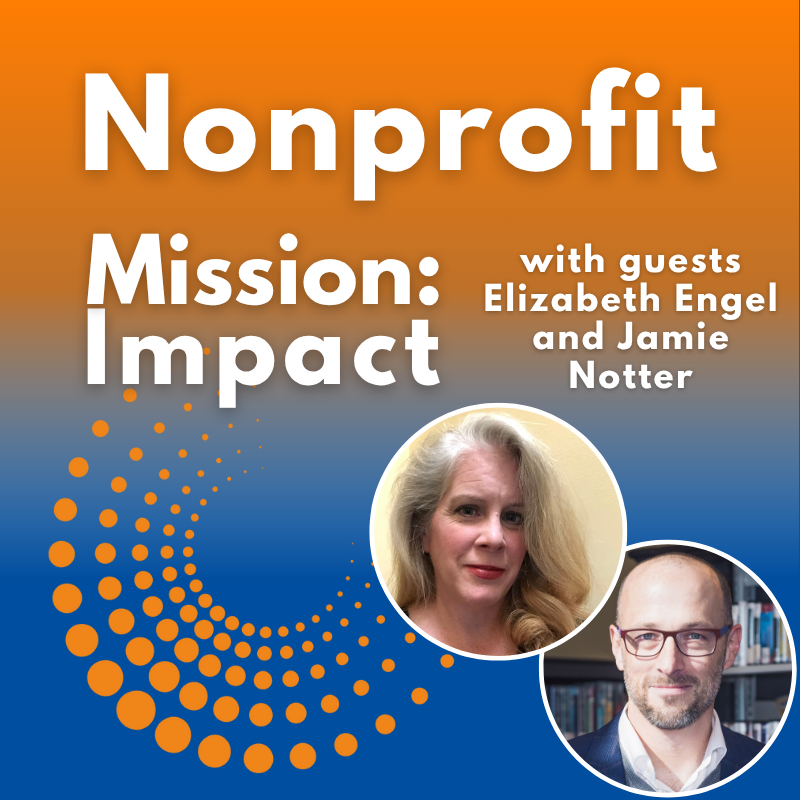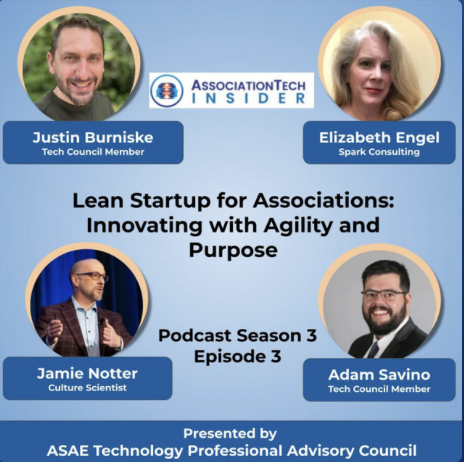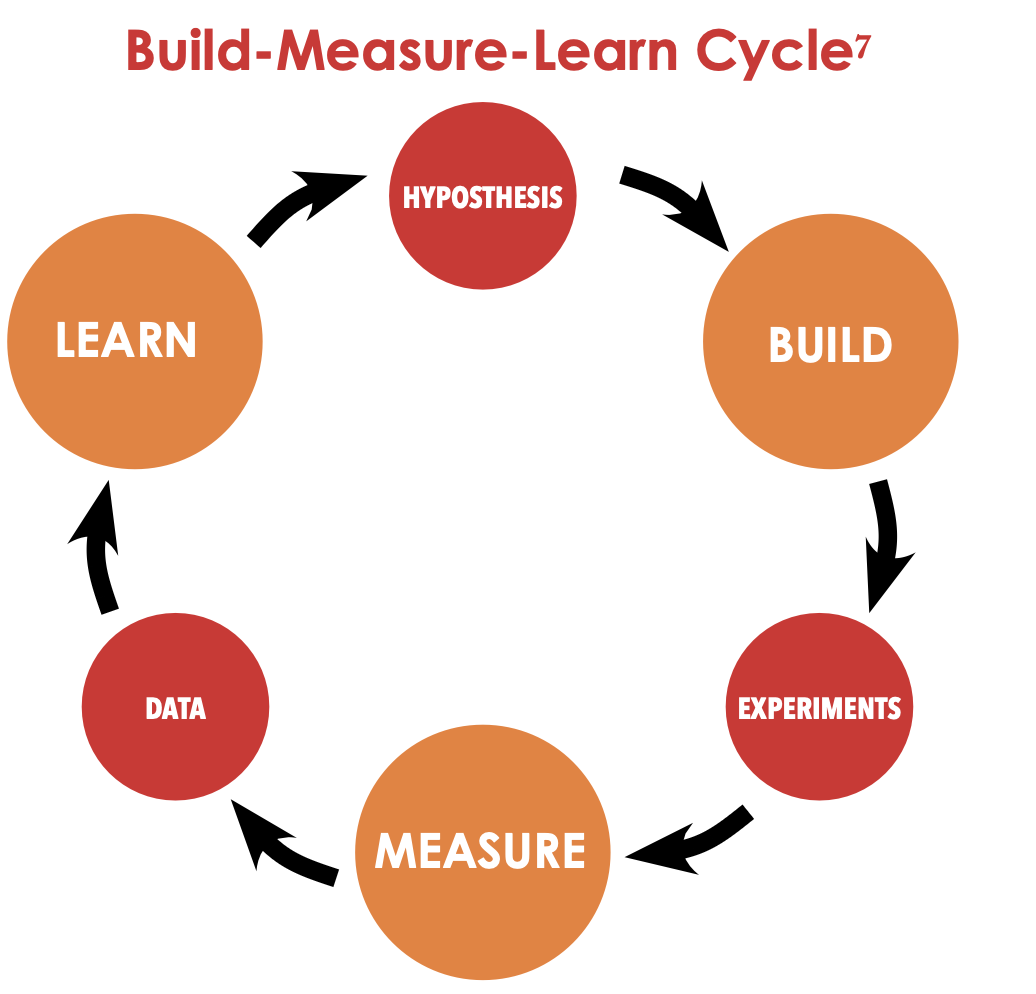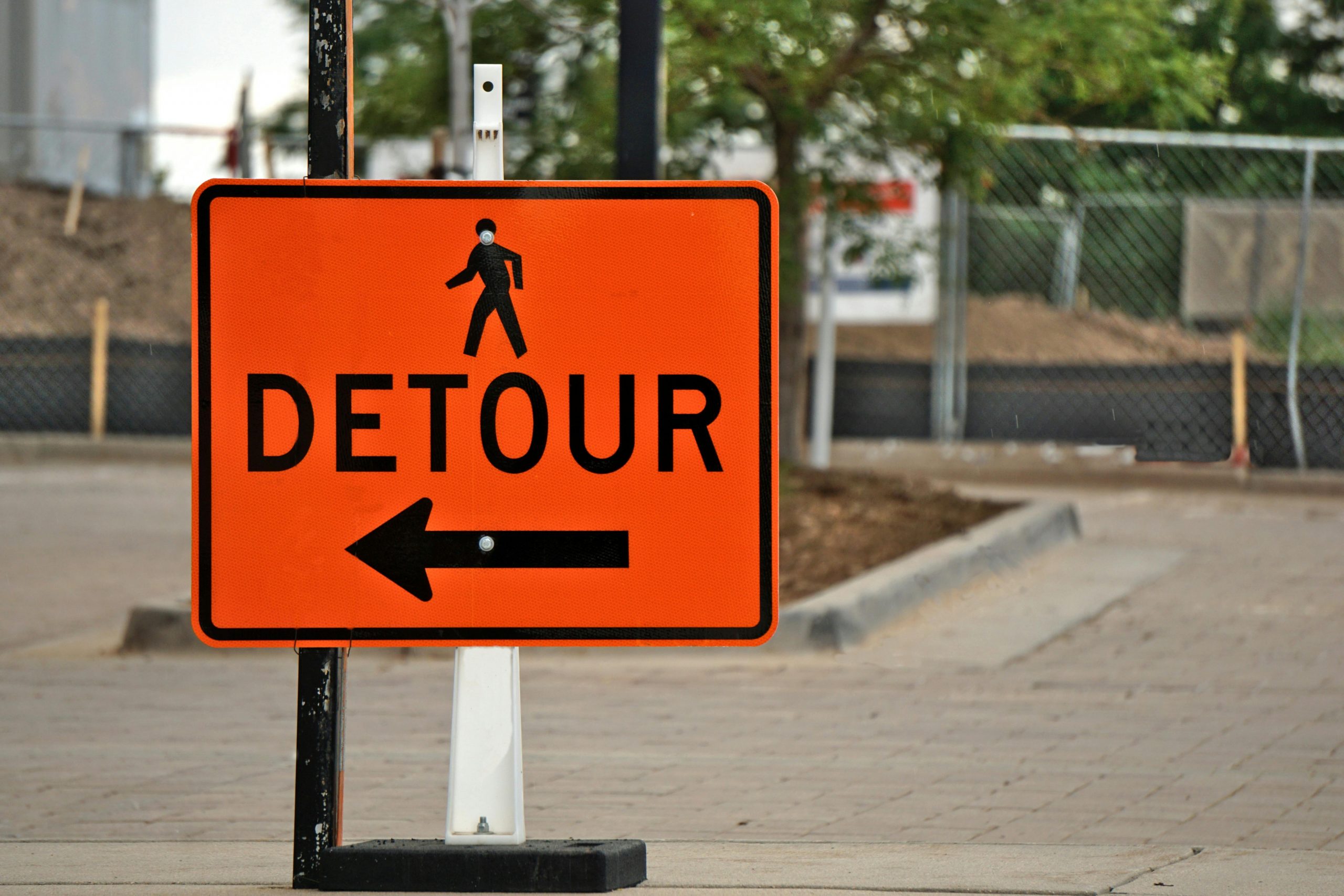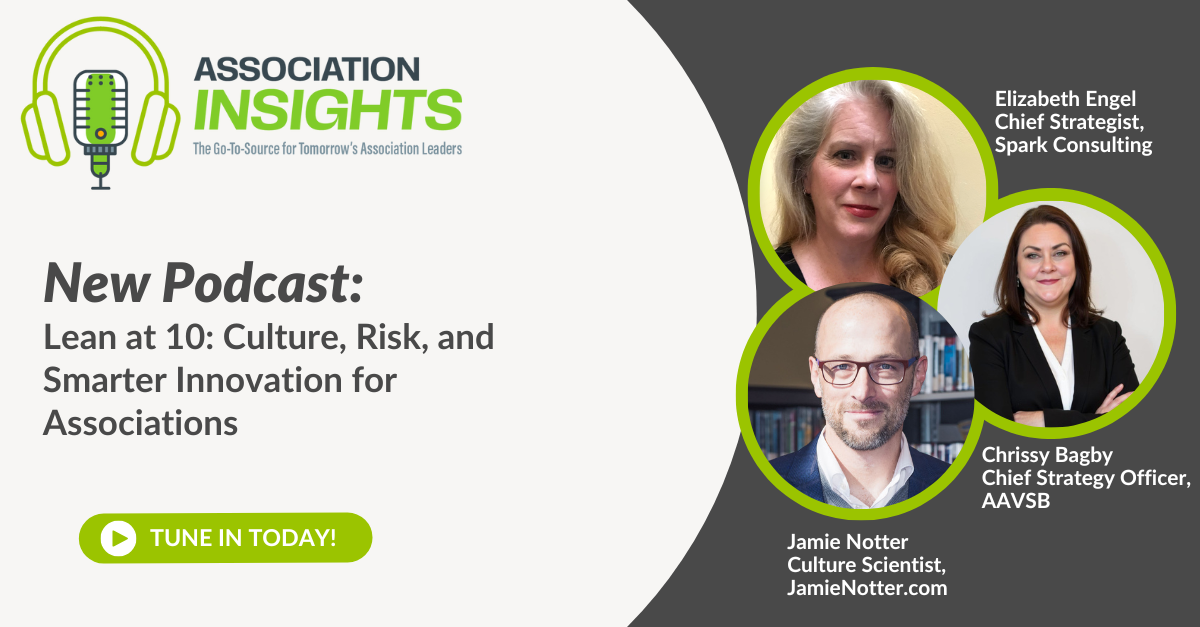
Jamie Notter, Chrissy Bagby, and I recently had the opportunity to have a candid conversation about what it really takes to innovate with the Association Insights Podcast host Colleen Gallagher.
Based on our recent whitepaper, Lean at 10: Culture Eats Methodology for Lunch, we discussed how lean startup methodology, paired with an intentional approach to culture change, can help associations escape the “we have always done it that way” trap.
The episode focuses heavily on the American Association of Veterinary State Boards case study, where Chrissy shares how her team moved from big, risky projects built on a foundation of unarticulated and untested assumptions to structured experiments buoyed by shared understanding and the role of the “cooperative skeptic.”
Tune in for honest, practical insight into bringing lean startup into your association, whether you’re a C-suite executive or leading from the middle:
- Spotify: https://open.spotify.com/
episode/1Vi7bpdpPTBIgQLld62GlP - Apple Podcasts: https://podcasts.apple.com/us/
podcast/lean-at-10-culture- risk-and-smarter-innovation- for/id1739260875?i= 1000739472225 - YouTube Podcasts: https://youtu.be/XDUqXg2iF30
